The Best Government & Public Sector ERP Software
We’ve analyzed the top ERP systems for governments and public sector organizations of all sizes. These platforms help consolidate data across the entire agency, and include key features such as grant management and capital budgeting.
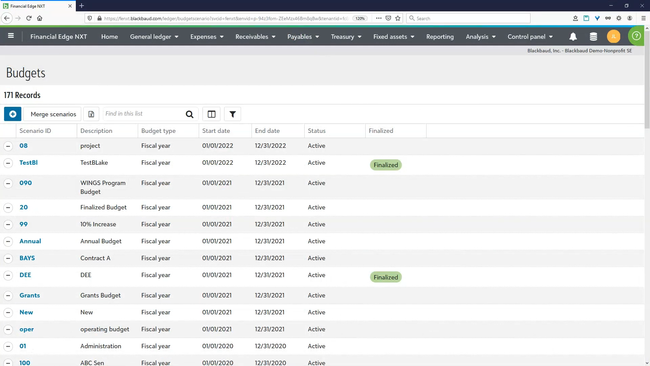
- Comprehensive training resources
- Financial reporting tools
- Modules for accounts payable, receivable, etc.
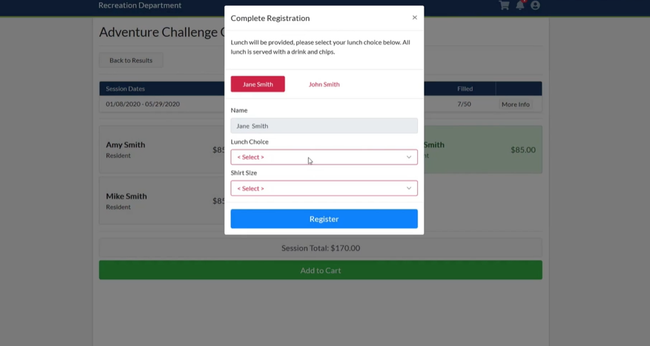
- Specialized for smaller municipalities
- Web portals and mobile apps for employees, residents, vendors
- Continuous improvement and compliance
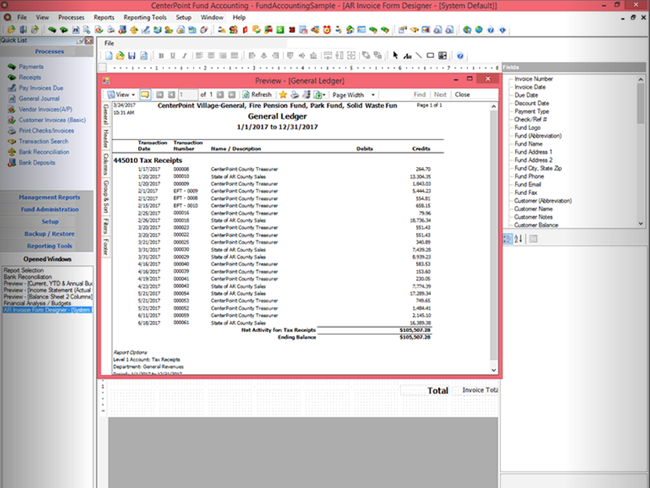
- Affordability and targeted design
- Comprehensive and customizable reporting
- Integration capabilities
It’s well-known in the private sector how ERP software can streamline operations to increase profits. Yet many are unaware of how ERP solutions can improve public sector and government entities as well.
Here are the top 8 ERP software products for the government and other public sector businesses.
Short Summary
- Top ERP products for government and public sector workplaces include InVision, Edmunds GovTech, and Spectrum.
- Remember to look for key features like grant management and remote accessibility when making your selection.
- Consider if any compliance or security regulations need to be met.
Learn more about these products to find the right ERP software to streamline your public sector services:
- Blackbaud Financial Edge NXT: Best Overall
- Edmunds GovTech: Best for Small Municipalities
- CenterPoint Fund Accounting for Municipals: Customizable Reporting
- Tyler Enterprise ERP: Best for Large Municipalities
- Spectrum by Harris Local Government: Modular Architecture
- Caselle Connect: Advanced Financial Modules
- OpenGov ERP: Best for State Agencies
- MIP Fund Accounting: Holistic Grant Management
Blackbaud Financial Edge NXT - Best Overall
Blackbaud Financial Edge NXT is our top pick due to its numerous modules, from fund accounting, projects, grants, and endowments to advanced security and allocation management. The platform can manage budgets at different hierarchical levels of an organization, from departments to overarching entity-wide budgets.
Blackbaud is the result of decades of experience in working with government accountants, making its financial features highly specialized and tailored to the public sector. It also provides extensive reporting capabilities and tools for managing and monitoring grants.
Edmunds GovTech - Best for Small Municipalities
Edmunds GovTech specializes in catering to the needs of smaller municipalities. It delivers user-friendly software that’s easy to understand and makes training quicker to accomplish. It also provides affordable pricing tailored to the needs of small public entities.
Edmunds GovTech presents many customization options, allowing clients to select the modules that best fit their needs. Users can personalize their software experience and add on features. This allows municipalities to adapt the software to their current requirements and scale up as they grow.
CenterPoint Fund Accounting for Municipals - Customizable Reporting
CenterPoint Fund Accounting for Municipals offers adaptable reporting features tailored to governmental accountants. It delivers the ability to craft bespoke reports for specific funds, including grants, departments, or projects. With built-in budgeting and forecasting tools, CenterPoint offers custom reports for a holistic financial overview. Finally, it ensures compliance by incorporating GSP reporting essentials.
Tyler Enterprise ERP - Best for Large Municipalities
Tyler Technologies’ Enterprise ERP’s tax billing and collections module optimizes these departments for large public sector organizations. It supports data imports from computer-assisted mass appraisal (CAMA) systems, which help agencies assess and collect property taxes. These imports are crucial for departments overseeing tens of thousands of properties, as it eliminates time-consuming double-entry processes.
The system consolidates all billing categories, including tax, utility, and business licenses. From there, you can create detailed reports for enhanced data visualization. It enables drag-and-drop functionality to configure charts, maps, and graphs that you can export to Microsoft Excel. This lets you view overall revenue or drill down into department-specific collection metrics for detailed analysis.
Tyler Enterprise ERP is sold modularly, so municipalities can choose which features to implement. That said, it lacks a built-in project management system, so you must integrate a third-party platform through its API.
Spectrum by Harris Local Government - Modular Architecture
Unlike some ERP systems that might require a full-scale rollout, Spectrum’s modular design allows organizations to implement it department by department. Municipalities can integrate these modules to form a cohesive system as needed, offering flexibility and a tailored approach. This can reduce disruption and improve the chances of successful adoption.
Spectrum covers a broad range of applications from applicant tracking to asset management, budgeting, purchasing, and employee history. It meets the essential needs of local governments and utility authorities in a single suite.
Caselle Connect - Advanced Financial Modules
Caselle Conect presents modules ranging from credit card authorization to materials and project management. The system goes beyond basic financial management to deliver end-to-end auditing. This ensures that each transaction is traceable from start to finish. Additionally, it makes GASB reporting easy, enabling the tracking of fixed assets and capital projects. Lastly, the materials management and project management tools help organizations comply with GASB 34 requirements.
OpenGov ERP - Best for State Agencies
The budgeting and performance management suite in OpenGov gives state agencies a more transparent way to allocate and plan resources. The AI-assisted budget builder includes guided workflows that auto-track changes, flag errors, and ensure version control, minimizing manual rework.
The platform also offers a digital budget book tool. This makes publishing interactive, GFOA-compliant reports online or exporting them as PDFs easy. Finance teams spend less time formatting spreadsheets, freeing them up to focus more on outcomes.
Plus, OpenGov factors performance management into each step of the budgeting process. Your team can link every funding decision to KPIs, goals, and outcome metrics—whether they’re assessing infrastructure timelines or measuring the results of a public health program. Real-time dashboards give department directors a clear view of what’s on track and where course corrections are needed.
OpenGov is a higher-tier government ERP software; it’s ideal for agencies with 100 to 500 employees, with the total cost of ownership falling somewhere in the $100,000–$350,000/year range. Like most platforms in this space, final costs require a custom quote.
MIP Fund Accounting - Holistic Grant Management
MIP Fund Accounting is a top pick for its comprehensive grant management capabilities. The software allows organizations to maintain comprehensive profiles for each grant. This includes tracking grantor details, contact information, reporting periods, indirect cost rates, notes, custom fields, and more.
For every grant, users can view all financial activity, including outstanding invoices, payments, and credits. This detailed transaction tracking ensures transparency and helps organizations comply with grant stipulations.
What is ERP Software for Government and the Public Sector?
ERP software for use by government and public sector organizations is designed to make it easier to deliver services, manage resources, and maintain transparency in the delivery of public services. This software enables government organizations to better serve their constituents while adhering to regulatory requirements and fiscal responsibilities.
More specific [government accounting software] (/government/) can offer more financial functionality and Government Accounting Standards Board (GASB) compliance.
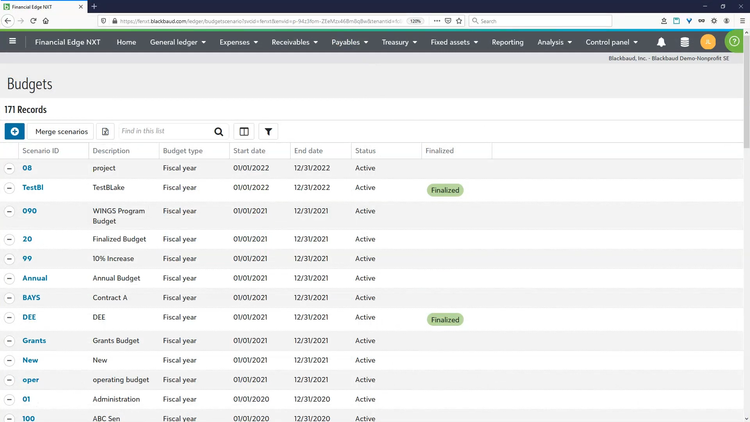
Key Features
Government ERP software should include the following key features:
- Financial Management: EUse these tools to manage budgets, allocate funds, track expenditures, and generate financial reports. Most importantly, maintain transparency and compliance with financial regulations.
- Grant and Fund Management: Public sector organizations frequently receive and distribute grants and funds. ERP systems assist in managing grant applications, tracking fund disbursements, and ensuring accountability.
- Budgeting and Planning: ERP systems assist in creating, managing, and monitoring budgets, helping government agencies allocate resources effectively.
- Compliance and Security: ERP solutions in government settings must adhere to strict security and compliance standards to protect sensitive data and maintain the integrity of government operations.
- Human Resource Management: This module handles employee data, payroll processing, benefits administration, recruitment, and workforce planning. It ensures efficient management of government employees and compliance with labor laws.
- Project Management: For government initiatives and projects, ERP software aids in planning, scheduling, and tracking progress. It helps manage resources, monitor budgets, and evaluate project outcomes.
- Workflow Automation: Automation features streamline routine processes, reducing manual work and improving efficiency. This is especially important for government agencies dealing with high volumes of paperwork.
- Performance Management: Various performance measurement and evaluation tools to assess the effectiveness of government programs and services.
- Reporting and Analytics: A range of customizable reporting and analytics capabilities allow government organizations to make data-driven decisions and meet reporting requirements.
- Inventory Control: Streamline the procurement of goods and services from requisition to purchase order to payment.
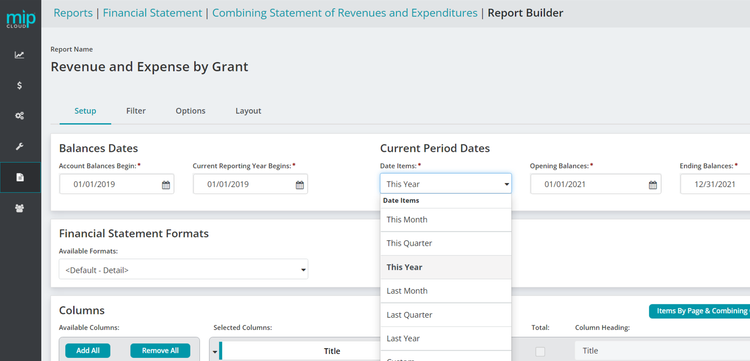
Benefits
There are many benefits to using ERP in government organizations and the public sector. In addition to automating a wide range of workflows, an ERP can give real-time insight into performance. This also increases transparency by clearly showing operations and building audit trails.
ERP also offers government and public sector organizations additional data security by keeping all information secure in one location. No more creating endless passwords for different programs. Instead, an ERP keeps everything under a single lock and key. And having one software instead of many reduces overall operational costs, particularly useful for charitable and nonprofit organizations.
Pricing
Pricing for government ERP software can range from $10,000 for small municipalities to over $1 million per year for state-level use. Final costs depend on factors like the number of modules purchased, user count, implementation scope, and deployment model. Some vendors may price based on population served or annual operating budget.
| Tier | Size | TCO | Example Products |
|---|---|---|---|
| Entry-Level | <25 employees | $10,000–$25,000/year | Edmunds GovTech Basic Suite, Caselle Complete, Tyler Incode (basic) |
| Mid-Tier | 25–150 employees | $25,000–$100,000/year | Edmunds Full Suite, Tyler Incode (advanced) |
| High-Tier | 150–500 employees | $100,000–$350,000/year | Tyler Enterprise ERP, OpenGov (full suite), CGI Advantage, CityView Enterprise |
| Enterprise | 500+ employees or state-level use | $350,000–$1 million+/year | Oracle Public Sector Cloud, SAP S/4HANA, Tyler Enterprise Suite |
What to Look For
Along with the key features, there are other things to consider when looking at ERP software for a government or public sector business. To ensure the system works in your organization’s best interest, remember to look for:
- Public Engagement Tools: Some ERP systems offer citizen portals or self-service features, allowing citizens to access information, submit requests, and interact with government agencies online.
- Software Integration Options: ERP software should seamlessly integrate with other government systems, such as tax management, land records, and case management, to create a unified platform for data sharing and decision-making.
- Remote and Mobile Accessibility: Many ERP solutions now offer mobile apps or responsive web interfaces, enabling government employees to access critical information and perform tasks remotely.




























